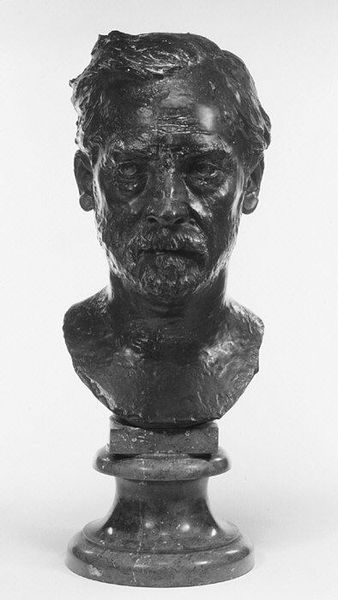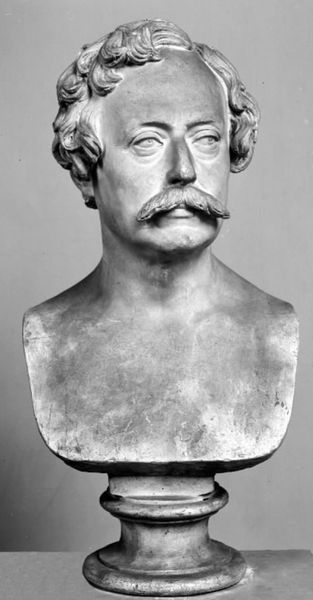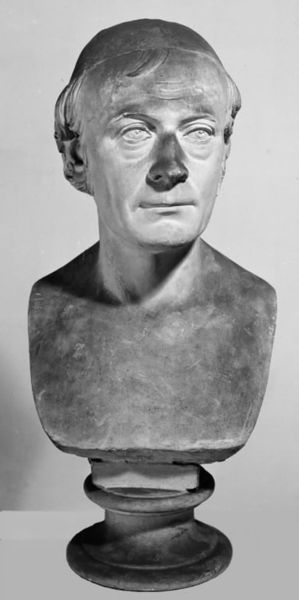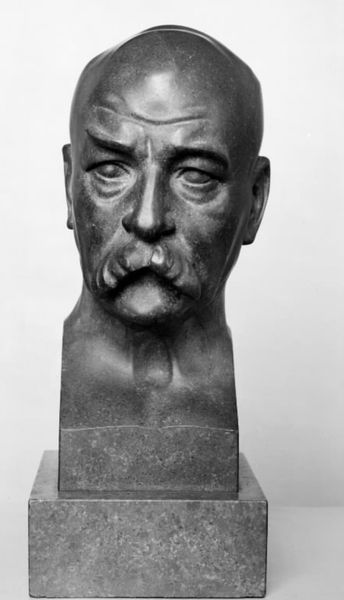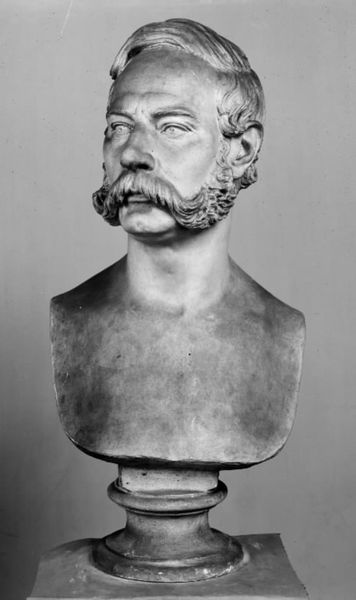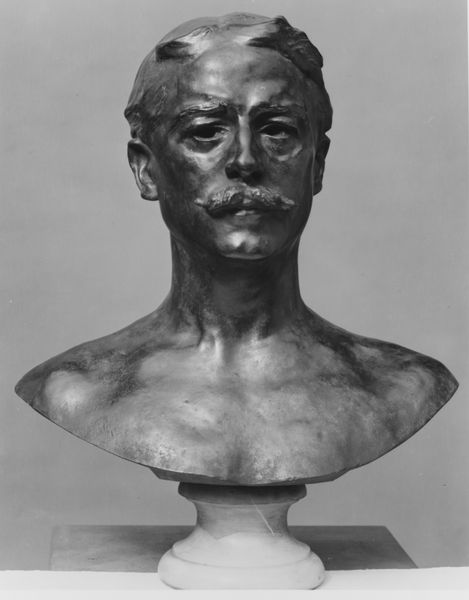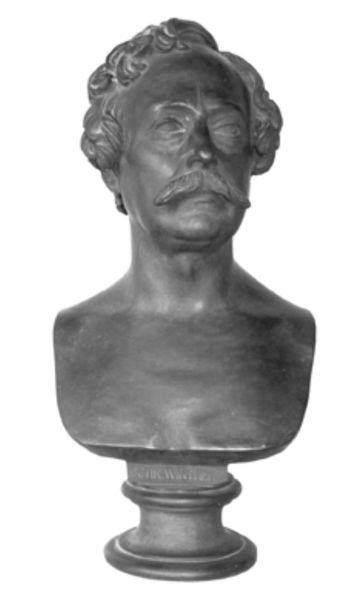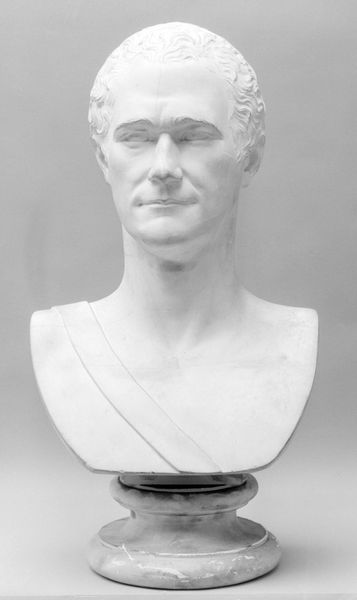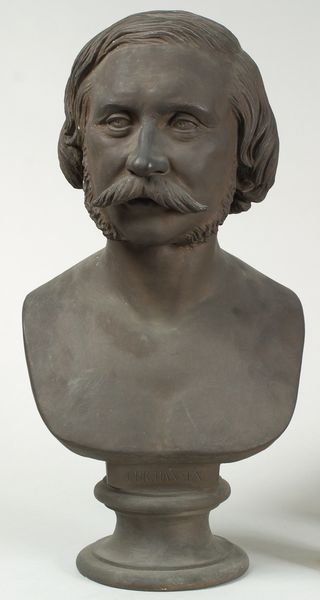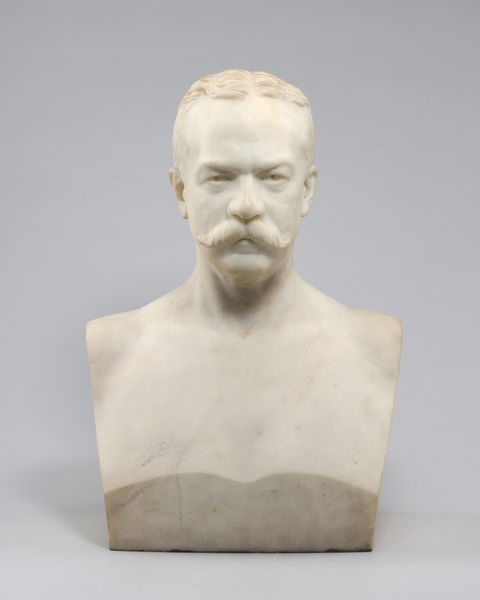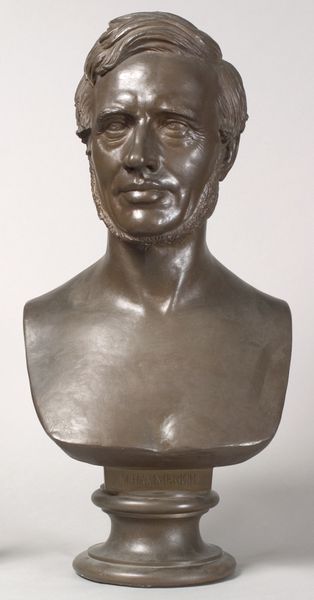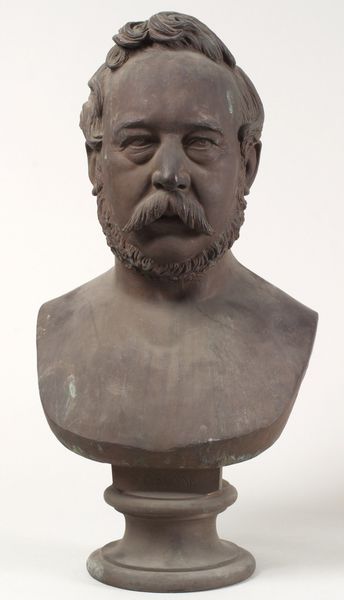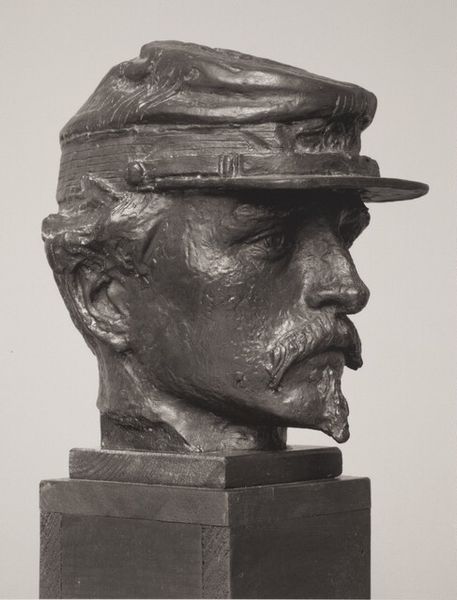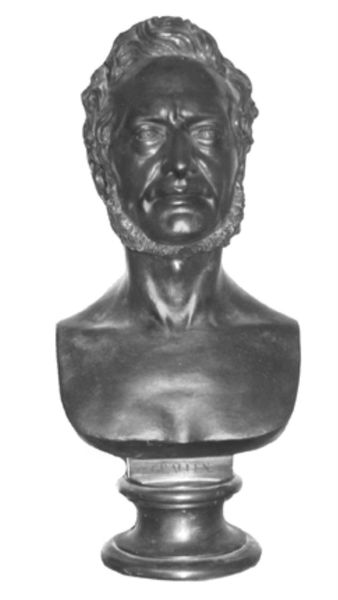
sculpture
#
portrait
#
sculpture
#
sculpture
#
men
#
decorative-art
Dimensions: No dimensions recorded
Copyright: Public Domain
Curator: Let's focus on this remarkable sculpted bust of Paul Baudry, crafted in 1878 by Paul Dubois. It resides here at The Met. Editor: There's an immediate stoicism radiating from this bust, almost Roman in its austerity, wouldn't you say? That focused gaze, the controlled expression—it projects power and self-possession. Curator: Indeed. Considering Dubois' context as an established sculptor of his time, it's hard to separate this bust from its era's emphasis on idealised masculinity and heroic representation. He's definitely embodying that dominant narrative. Editor: I'm fascinated by the meticulously rendered details: the precise sculpting of the hair, the slightly upturned mustache. These weren’t merely aesthetic choices; they are symbols of status, virility, perhaps even of artistic temperament in that period. It reflects that cult of personality so valued then. Curator: Absolutely. We must acknowledge how the symbol of the white, male artist continues to exert influence, demanding critique but also necessitating understanding of the historical mechanisms that granted such privilege. The choice of sculpture as a medium adds weight to the legacy, literally solidifying Baudry's place in artistic history. Editor: And sculpture inherently signifies permanence, durability. This bust, as an artifact, goes beyond a mere representation; it actively perpetuates cultural memory and notions of authority that continue to affect us. Consider its place here at The Met, a temple for Western culture, which lends further validation. Curator: Precisely, to appreciate this sculpture we should confront its implicit cultural biases alongside its undeniable artistic merits. How does its form mirror or contradict the power structures of its time? We also need to consider Baudry's work and influence—is this a reflection of how Baudry saw himself, or perhaps how Dubois viewed Baudry's position in society? Editor: Thinking about these symbols embedded within form sparks conversations about power, about artistic legacy, and how artworks continue communicating—or even manipulating—those ideas to audiences today. Curator: Well put. Seeing how societal biases imprint themselves within the very fabric of artistic representation is essential. Editor: Definitely given me something to ponder in relation to the role of such pieces in museums. Thank you.
Comments
No comments
Be the first to comment and join the conversation on the ultimate creative platform.
